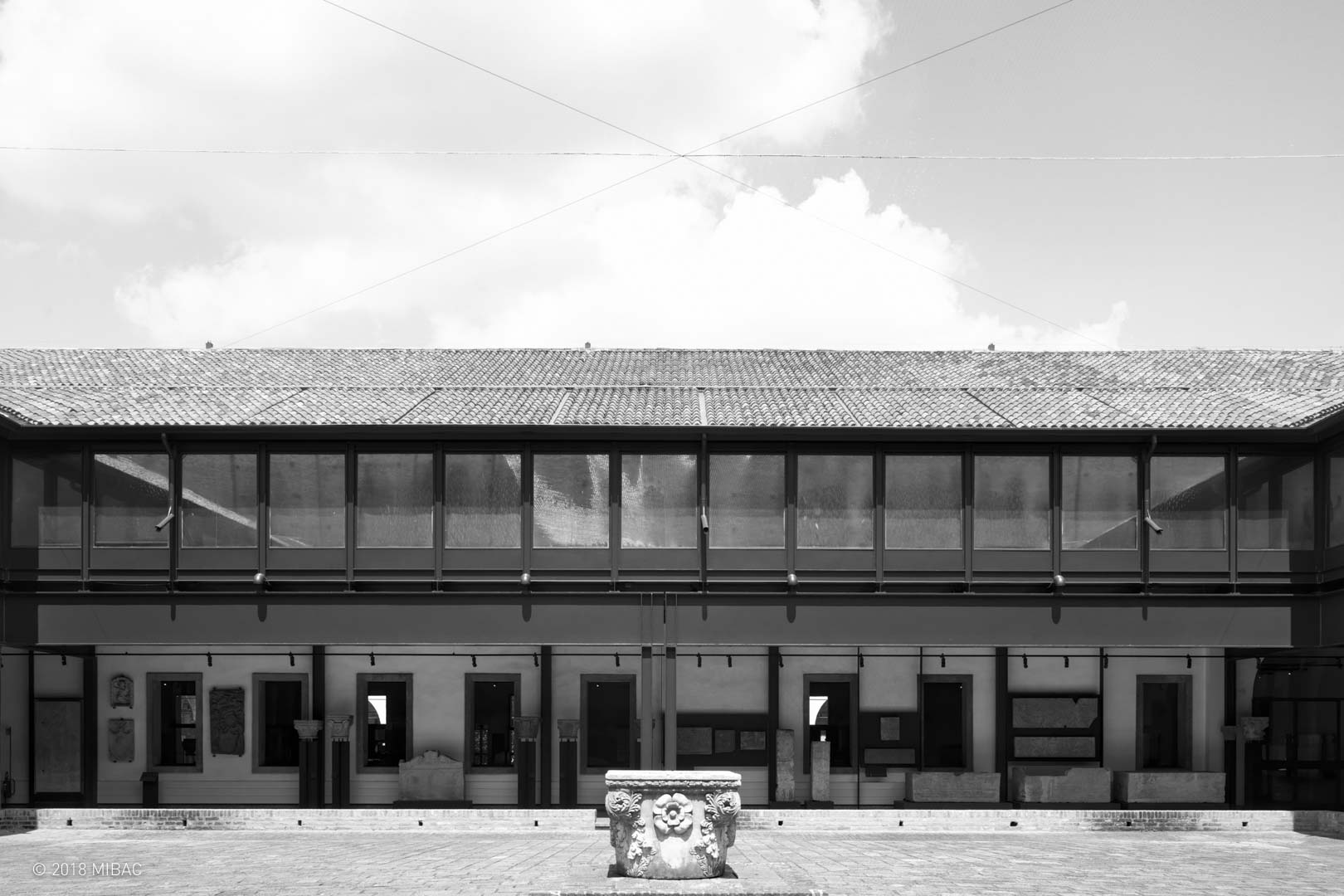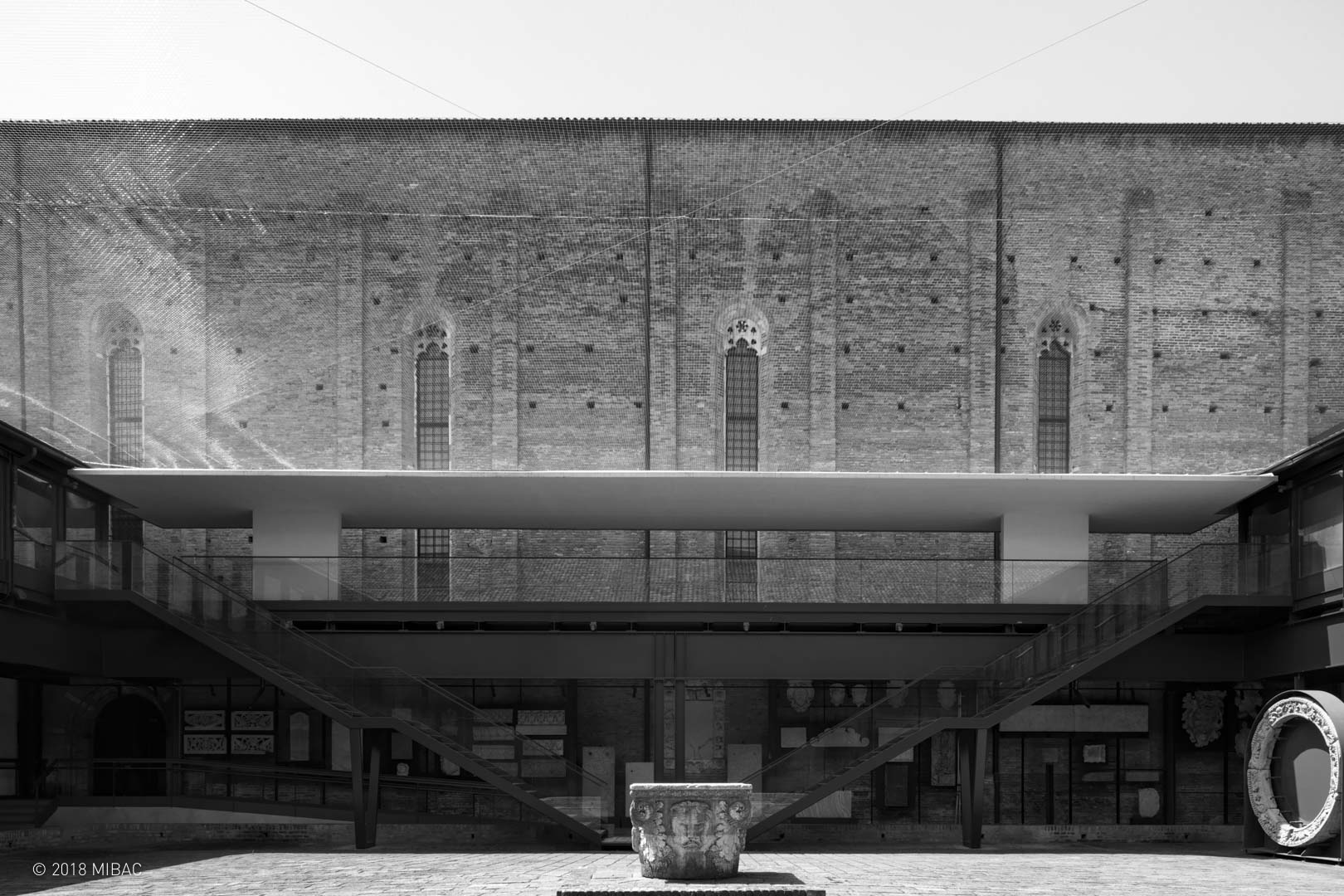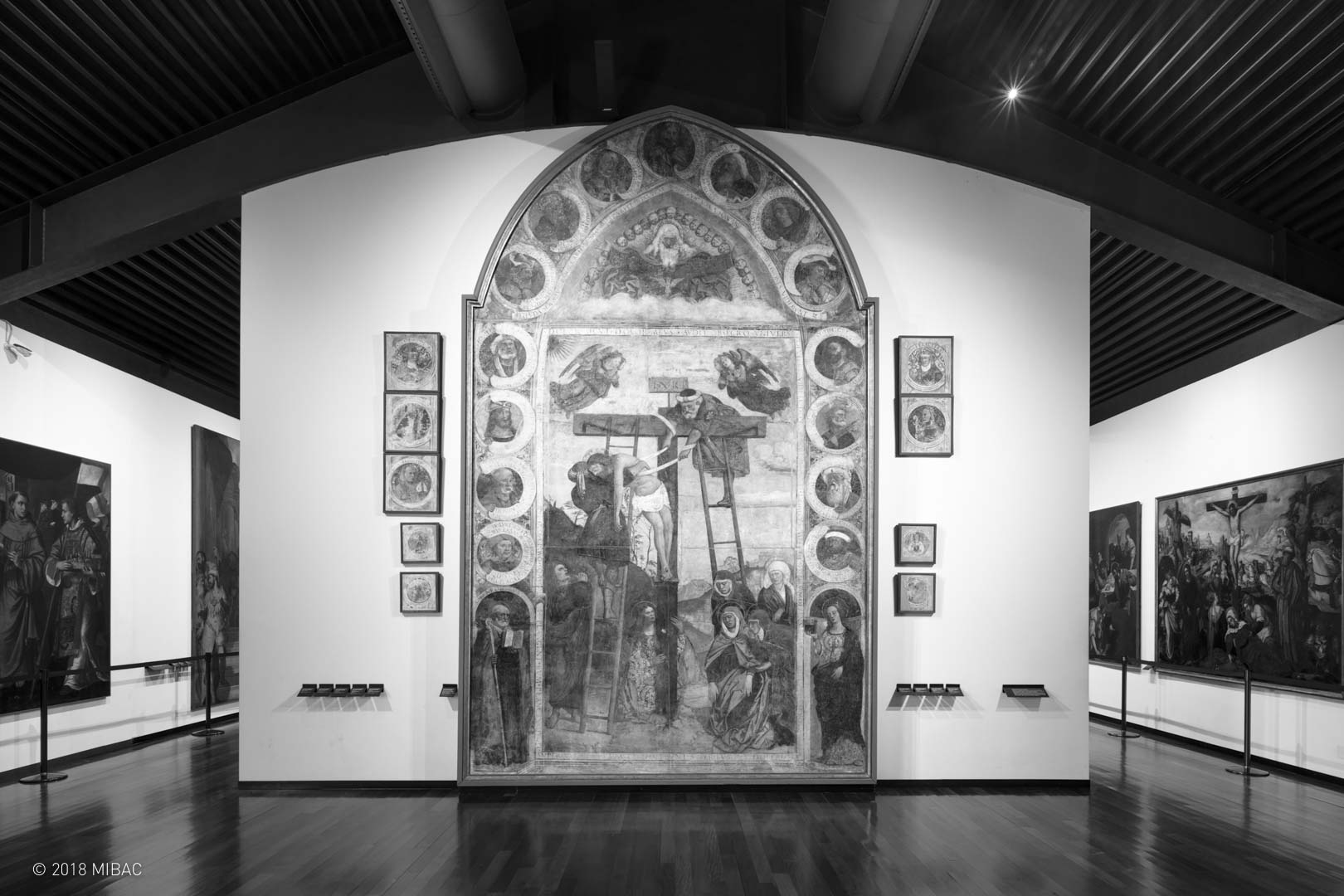Place: Padua, piazza Eremitani, 8
Authors: Franco Albini, Marco Albini, Franca Helg, Antonio Piva
Chronology: 1969 | 1979
Itinerary: Treasure hunt
Uso: Museum

The Civic Museum and the new gallery in the Eremitani complex are made up of a series of buildings belonging to different periods – the Scrovegni chapel with Giotto’s frescoes, the Eremitani (Hermitage) basilica, the medieval terraced houses and the Roman arena – and some new buildings designed by the Albini studio. The latter consist of the entrance block adjacent to the church square and the new art gallery, an autonomous building located in the area between the cloisters and the houses of via Porciglia; both are easily recognizable, as they are built with modern materials such as steel and reinforced concrete.

Albini intervened on pre-existing structures and assessed their state of conservation. The main cloister, which had not been damaged by bombing, was restored using traditional techniques and materials. The smaller one, the eastern arm and porch oh which had been destroyed, was rebuilt using a structure in Corten steel profiles.

Long and tall beams, which lean on thin central supports with a double profile, reconstruct the portico. At the upper level, tempered glass windows recall the openings of the loggia in the main cloister.

On the fourth side of the cloister that runs along the side of the church, Albini placed a double metal staircase that connects the cloister to the upper level.

The exhibition spaces inside the loggia of the minor cloister are extremely bright, thanks to the tempered glass windows.

The rooms that border the major cloister host the archaeological museum.

The art gallery displays paintings dating back to the period between the 1300s and 1800s.

